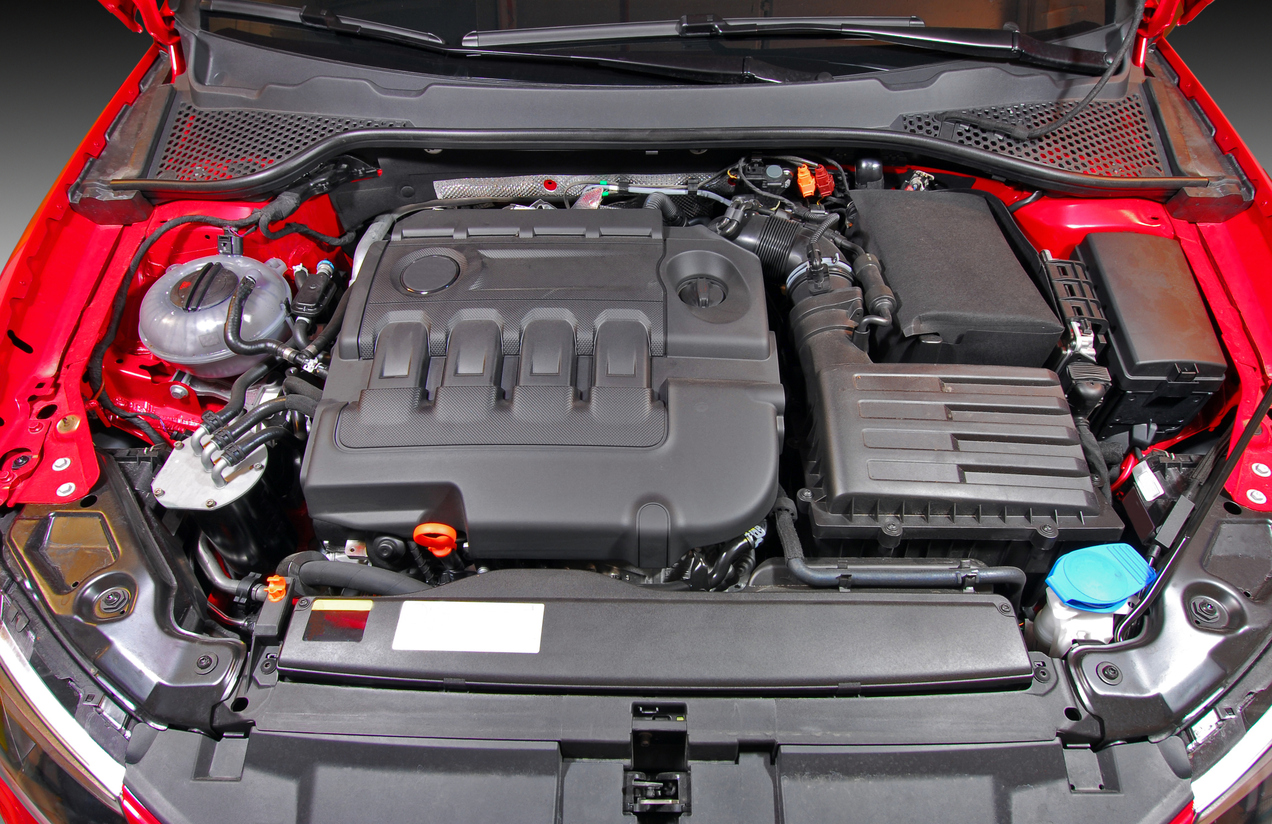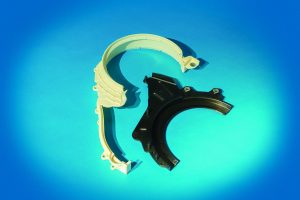As underhood conditions become more challenging, automakers and their suppliers are increasingly relying on high-temperature plastic car parts to help reduce weight and cost, increase parts integration and provide for longer service life. Plastics can also improve “de-burring”. This is a step in manufacturing that smooths the insides of airflow parts. Smooth non-turbulent airflow is crucial to engine efficiency.
Powertrain
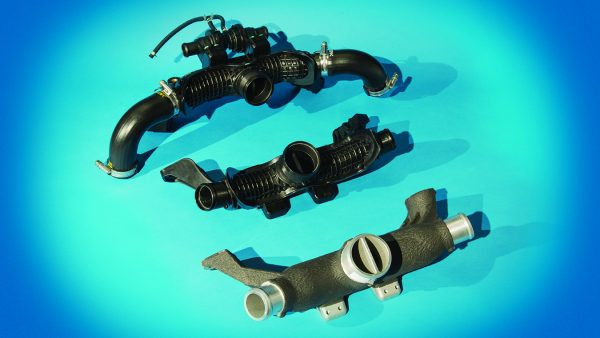
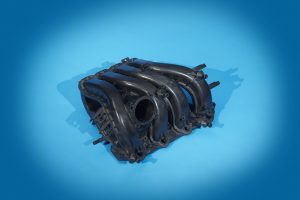 The powertrain is one of a car’s most complicated parts. The term “powertrain” refers to a system of bearings, shafts, and gears. Together, they send the engine’s power to the axle. Plastics can help reduce the number of parts needed per component.
The powertrain is one of a car’s most complicated parts. The term “powertrain” refers to a system of bearings, shafts, and gears. Together, they send the engine’s power to the axle. Plastics can help reduce the number of parts needed per component.
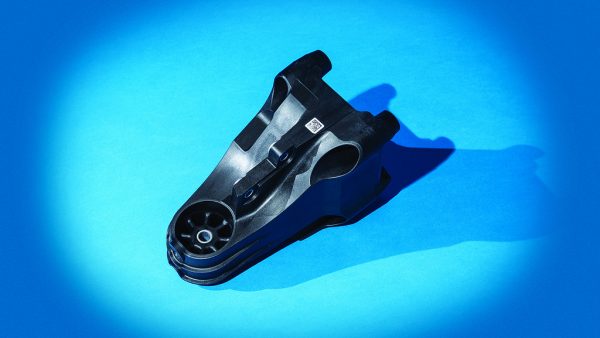
Plastics are well suited for use in the powertrain because they can reduce costs and weight and dampen noise and vibrations. We even use plastics to make engine mounting clevis bracket. Air intake manifolds, cam covers, crankshaft covers, fuel system and engine cooling shutters are just a few examples and, this is only the beginning.
The 2016 Alfa Romeo Guilia features an innovative composite engine coolant control valve. This product design allows good fluid control and low coolant leakage at the seals on the valve moving components. Dimensional control is provided through innovative molding and assembly processes with the combination of PPA and PPS materials. The component results in an approximate 2% increase in fuel efficiency saving consumers money at the pump.
Using 50% glass reinforced polyamide plastic for engine brackets enabled improved NVH in the powertrain of the Mercedes 2017 E-Class Coupe. An innovative injection molding tooling concept was developed for production resulting in significant cost savings.
Transmission
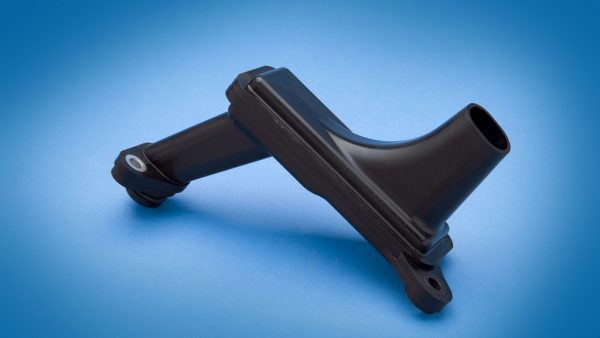
Plastics are regular substitutes for metal in transmissions today. They offer engineers a spectrum of solution choices. We can customize an innovative plastic component for heat, chemical resistance, lubrication, and strength.
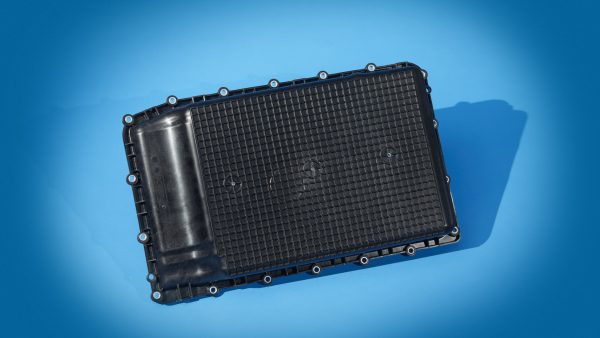
Additives, fillers, and reinforcements can vary the properties of a plastic. For instance, engineers choose polyetherimide in transmissions for its superior dimensional, heat, and creep performance. In the same way, a single piece of nylon can replace several steel washers.
Unique part geometry and CFD (Computational Fluid Dynamics) studies led to the design of a new baffle for injection molding on the 2018 Ford Focus. The design enables seal elements and fluid flow passages for improved transmission performance, previously not possible in a stamped metal component. Reports indicated that transmission efficiency was improved by 8%, resulting in up to 0.5 mpg economy and a 50% weight reduction over comparable metal designs, and that baffle design is also recyclable.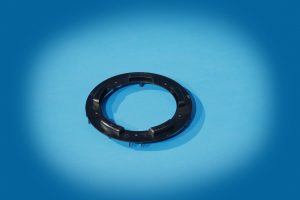
The 2017 Ford F-150 features an injection molded composite as the main bottom oil pan for a 10-speed automatic transmission. The innovative plastics design provides chemical resistance to hot automatic transmission fluid and helps maintain structural and sealing integrity for the life of the vehicle. It also resists damage from road debris and nearby exhaust plumbing. The strong solution reportedly supports the full weight of the transmission when the latter is removed from the vehicle while reducing weight by 55% vs. previous steel pans.
Drive Shaft
A driveshaft transfers power from the transmission to the rear axle of the vehicle. If a steel driveshaft fails, it can project shrapnel in all directions. It can dig into the ground, catapulting the vehicle into the air. Plastic composite driveshafts use carbon and polymer fiber.
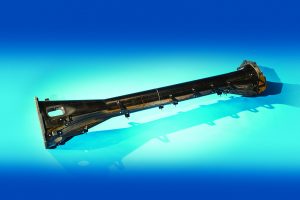 Upon failure, composites tend to burst into small fibers or “broom,” posing less danger. In one vehicle, it took almost 20 times normal operating torque before failing. Composite driveshafts can be up to 50% lighter. This means less energy to spin the shaft and more energy to spin the wheels.
Upon failure, composites tend to burst into small fibers or “broom,” posing less danger. In one vehicle, it took almost 20 times normal operating torque before failing. Composite driveshafts can be up to 50% lighter. This means less energy to spin the shaft and more energy to spin the wheels.
A composite shaft can have greater torsional flexibility. This translates to a higher angle of rotation per torque load than traditional shafts. Increased torsional flexibility helps absorb impact loading (torque spikes) such as “clutch pop.” This increases the life of other drivetrain components connected to the shaft.
Download to Learn MoreFuel Systems
Metal fuel tanks may corrode from fuel, road chemicals, salt, mud, and gravel. Corrosion can weaken the tank, which poses serious risks of spills and explosion. High-density polyethylene (HDPE) fuel tanks are resistant to those corrosive environments. Designers shape a car then at the end of the process can fill leftover negative space with the plastic tank shape.
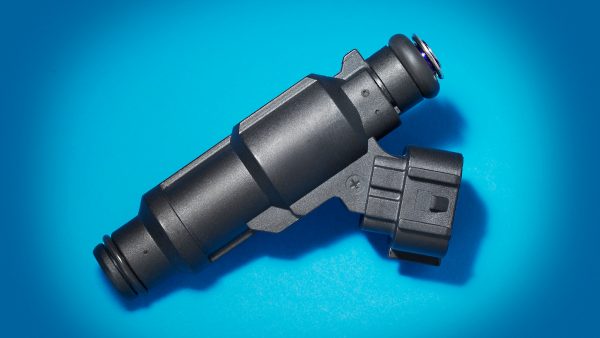
The “no-seam” integrity of plastic tanks adds to vehicle safety. Manufacturers blow a thick continuous multi-layer tube of the polymer into a mold. This can shape a “seamless” part.
Seamless gas tanks help prevent leakage during crashes. Often, designers will make plastic fuel tanks of up to six layers. Thicker tank walls better prevent vapor and emission permeability and provide added structural stability. An average plastic tank also weighs two-thirds less than an average steel tank.
Plastics go beyond fuel tanks to include the multitude of parts and assemblies that make up the fuel system, reducing weight, providing chemical and corrosion resistance and improving engine efficiency. 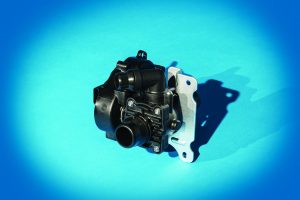 For example, the 2015 Honda Fit features an innovative technology allowing the electrical heater within the injector to be energized by the vehicle controller, rapidly heating the ethanol fuel and dramatically improving vaporization while reducing emissions. The technology reportedly reduced vehicle weight while improving cold starts and eliminating the need for a redundant gasoline fuel system on the vehicle.
For example, the 2015 Honda Fit features an innovative technology allowing the electrical heater within the injector to be energized by the vehicle controller, rapidly heating the ethanol fuel and dramatically improving vaporization while reducing emissions. The technology reportedly reduced vehicle weight while improving cold starts and eliminating the need for a redundant gasoline fuel system on the vehicle.
Engine Components
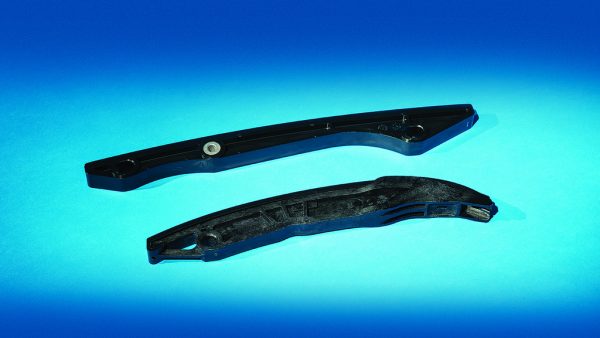
Material engineers build resins by the molecule to meet the heat demands of today’s engines. They have revolutionized engine part design.
Valve covers reduce weight. Air-intake manifolds increase and smooth airflow. This lets an engine “breathe” faster. Plastic manifolds designers can build intercoolers right into the part. Intercoolers reduce the temperature of air from the compressor and exhaust. So the engine gets the right amount at the right temperature. Plus, the engine responds quicker during acceleration.
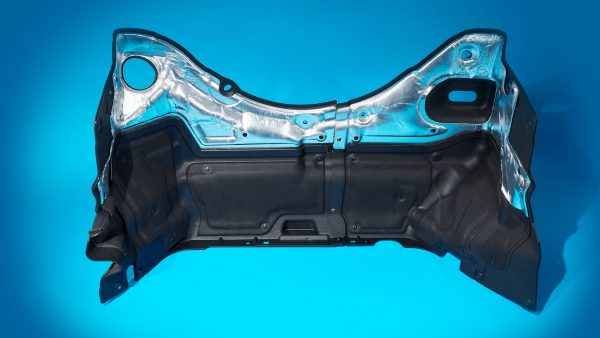
Integrated plastic parts like these increase available engine bay space. It leaves room for front-end pedestrian protection designs and re-burning exhaust gases gives us another chance to burn uncombusted fuel. A cleaner burn can decrease NOx and CO2 emissions.
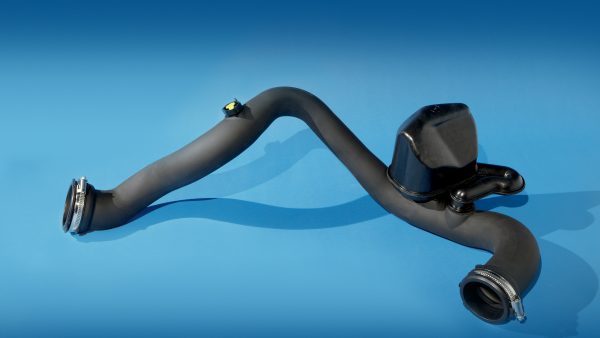
Consider the heat inside the timing chain housing sealed against the engine. Low friction chain tensioners can reduce camshaft rotational torque. This increases efficiency on every crankshaft turn, by .04 percent. That adds up.
All 2017 F-150 trucks and Mustangs use these plastic tensioners and estimates this reduced gas consumption is equivalent to 12,000 barrels of oil.
The 2015 Hyundai Genesis uses an innovative all-plastic engine-room partition wall providing excellent sound insulation between engine and passenger compartments thanks to the use of composites. Replacing stamped steel the injection-molded plastic partition has been found to reduce engine noise, lower part count and assembly time, and offer a 20% weight reduction without increasing costs.
Stay Up to Date
Sign up to receive our newsletter and get the latest delivered to your inbox.
The Insider’s View
Follow our blog for a unique look at how plastics are changing the way we make cars.
Read
